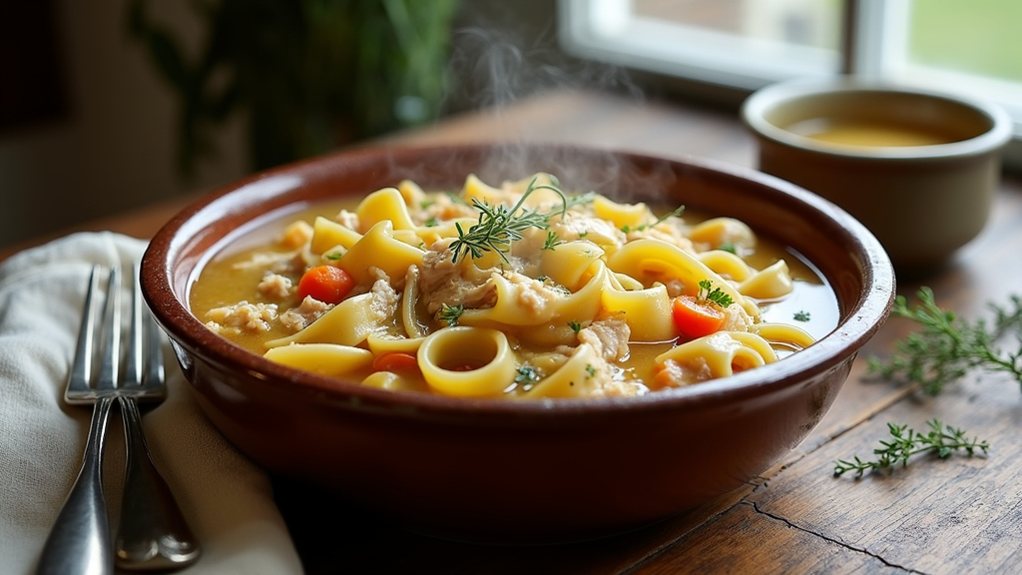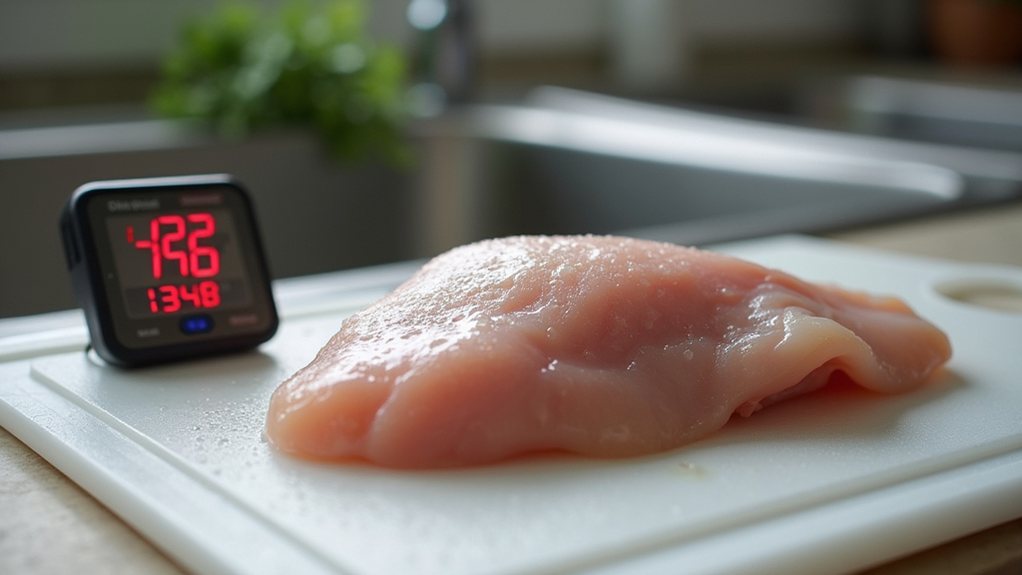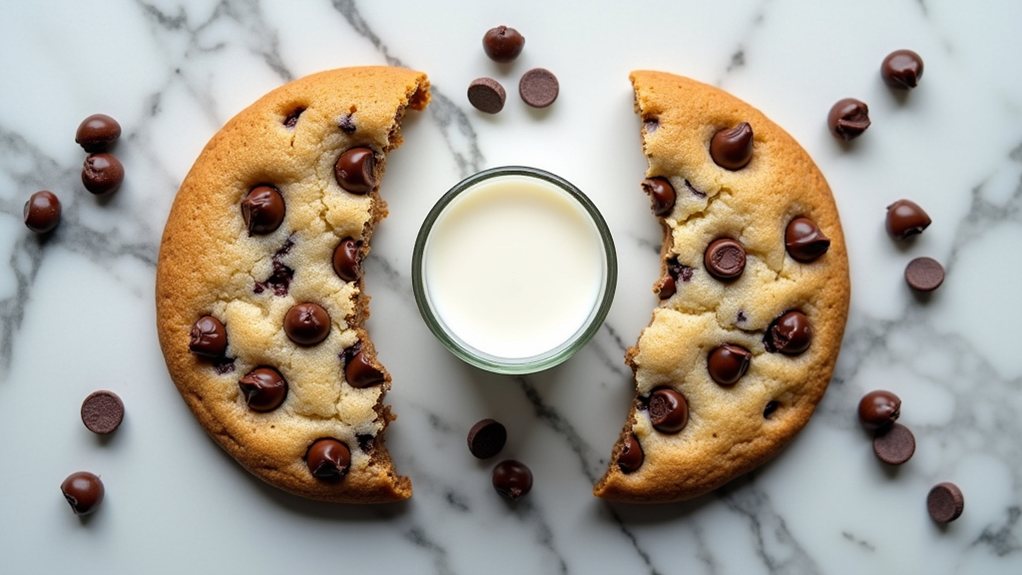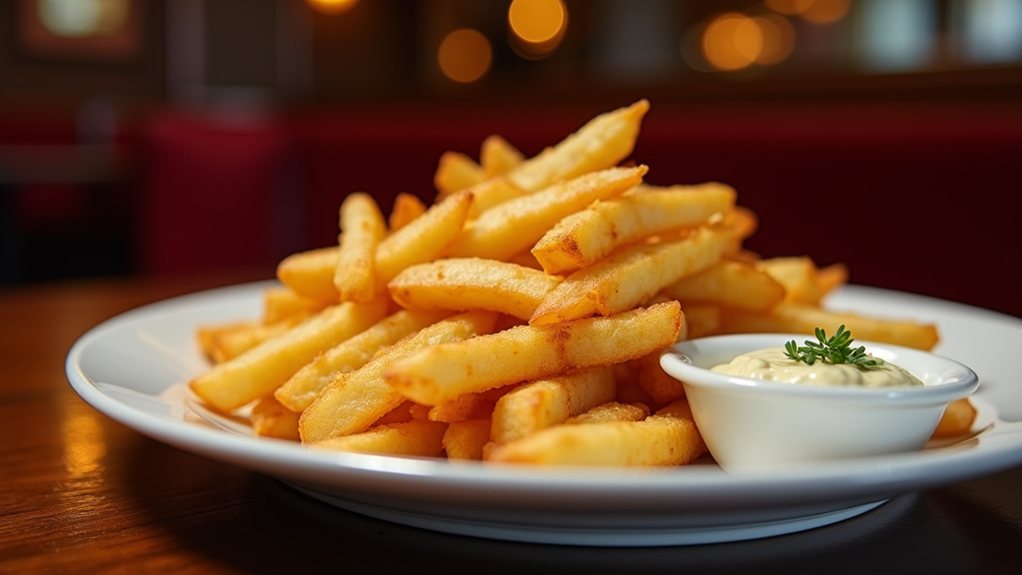Midwestern chicken and noodles stands apart from ordinary soup in countless ways. The dish begins with a rich, slow-simmered broth that carries depth regular soups simply can't match. Homemade egg noodles, thick and substantial, absorb this flavor while maintaining their texture. Unlike soup's thin consistency, chicken and noodles offers a hearty, stick-to-your-ribs quality that brings comfort during cold months. The secret lies in grandma's techniques, passed down through generations. What makes this comfort classic truly special?
Grandma's Secret Broth Base
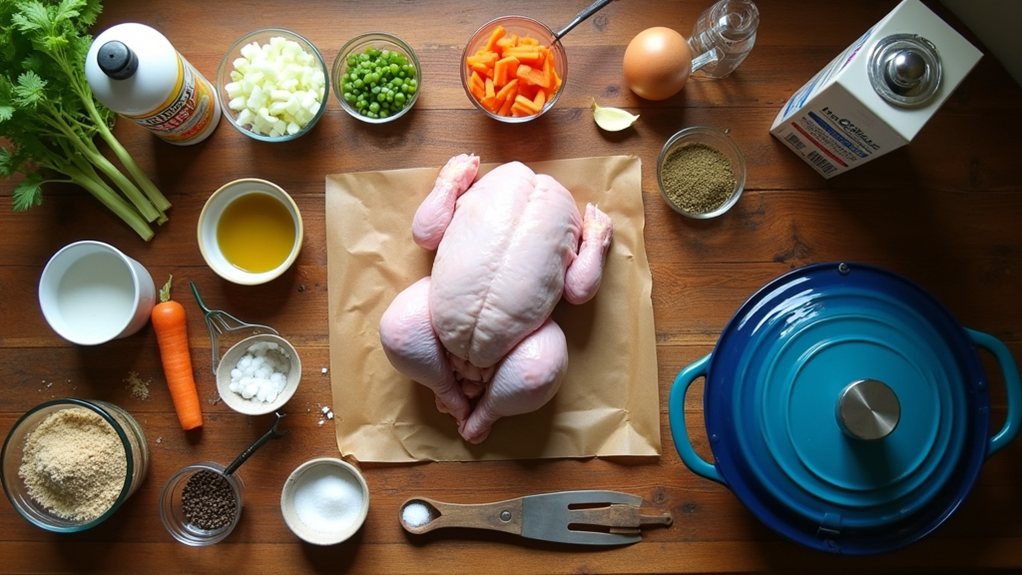
Grandma's secret broth base is the heart and soul of authentic Midwestern chicken and noodles. This rich, savory foundation transforms simple ingredients into the ultimate comfort food that generations have gathered around. The key lies in building layers of flavor through slow simmering, allowing the chicken to release its natural gelatin and fats while aromatics infuse the liquid with depth and complexity.
What separates an ordinary chicken broth from Grandma's secret version is attention to detail and patience. By combining bone-in chicken pieces with carefully selected aromatics and allowing plenty of time for flavors to meld, you create a broth that carries the essence of midwestern tradition in every spoonful. The addition of concentrated chicken base intensifies the flavor, while a splash of cream at the end creates that signature richness that makes this dish so satisfying on cold winter days. Many families prefer adding heavy cream at the final stage as it creates a silky texture without overpowering the dish.
For an unexpected flavor boost, some creative cooks incorporate cream of chicken soup into their broth base, which adds remarkable richness and body to the finished dish.
- 1 whole chicken (about 4 pounds), cut into pieces
- 2 tablespoons vegetable oil
- 2 large onions, roughly chopped
- 3 celery stalks, chopped
- 2 carrots, chopped
- 4 cloves garlic, smashed
- 2 bay leaves
- 1 tablespoon dried thyme
- 1 teaspoon whole black peppercorns
- 8 cups water
- 2 tablespoons chicken base or bouillon
- 1/2 cup heavy cream
- Salt and freshly ground black pepper to taste
Begin by heating oil in a large Dutch oven over medium-high heat. Season chicken pieces with salt and pepper, then brown them in batches until golden on all sides, about 5 minutes per batch. Remove chicken and set aside.
Add onions, celery, and carrots to the pot, scraping up any browned bits, and sauté until softened, about 5 minutes. Add garlic and cook until fragrant, then return chicken to the pot along with bay leaves, thyme, and peppercorns.
Pour in water and chicken base, bring to a boil, then reduce heat and simmer uncovered for 2-3 hours, occasionally skimming any foam that rises to the surface. Remove chicken, strain the broth, and when making your chicken and noodles, finish with heavy cream just before adding the noodles.
For the richest possible broth, don't rush the simmering process – those extra hours transform a simple chicken stock into Grandma's secret weapon. If time allows, make the broth a day ahead and refrigerate overnight, which makes it easy to remove excess fat and intensifies the flavors.
For an extra flavor enhancement, roast the chicken backs and wings in the oven before adding them to the pot. If you prefer a thicker base for your chicken and noodles, you can add a cornstarch slurry (1 tablespoon cornstarch mixed with 2 tablespoons cold water) during the final minutes of cooking.
Thicken With Potato Flakes
Sprinkle a handful of potato flakes into your simmering chicken and noodles to achieve that perfect, homestyle thickness without the fuss. Unlike traditional roux methods, potato flakes absorb excess liquid quickly while maintaining a neutral flavor profile that lets the chicken and herbs shine through.
This time-saving technique eliminates lumps when you initially mix the flakes with a small amount of cold liquid before adding to the pot. The result? A creamy consistency without adding butter or heavy cream, keeping the dish lighter while still comforting.
What makes potato flakes particularly brilliant is their versatility as a pantry staple. They're gluten-free, relatively low in calories, and provide that signature Midwestern texture that separates proper chicken and noodles from ordinary soup. Store them in cool, dry conditions away from direct sunlight to maintain their quality for months. My grandmother used to say this dish brings people together just like historical comfort foods did during hard times in America.
The starch creates a velvety mouthfeel that clings to each noodle.
Velvety Texture Seals Deal
The silky texture of properly prepared chicken and noodles serves as the defining feature that improves this Midwestern staple from basic to extraordinary. This velvety consistency comes from the marriage of roux-thickened gravy with tender egg noodles, creating a mouthfeel that's simultaneously comforting and satisfying.
When noodles simmer directly in the sauce, they release starches that naturally thicken the surrounding liquid. This technique, combined with the proper balance of milk or cream, transforms what could be merely soup into a substantive dish with perfect consistency.
The resulting texture carries flavors more effectively across the palate, elevating the savory characteristics while providing that unmistakable comfort food satisfaction. Unlike thinner soups, this thicker texture increases perception of fullness, making it the ultimate comfort food experience that stays with you longer than its soupier cousins.
